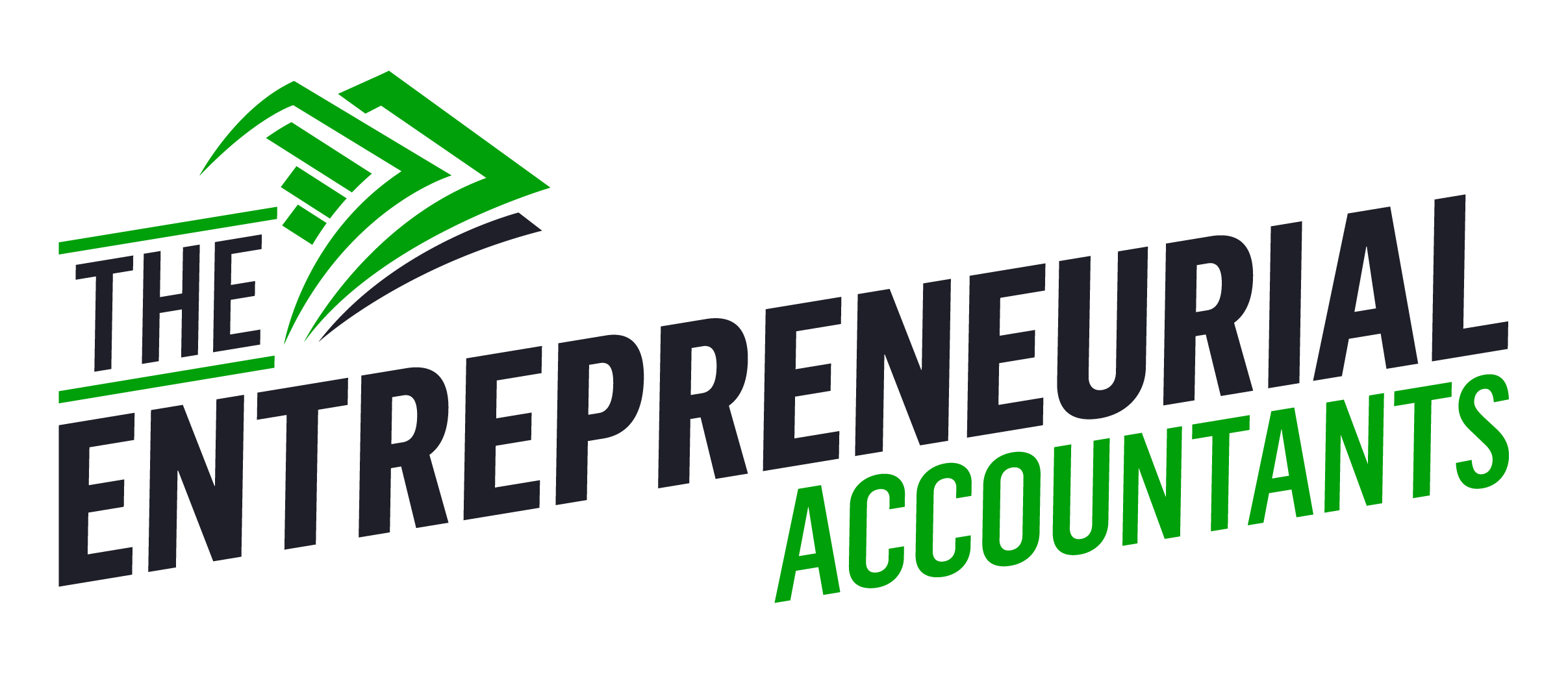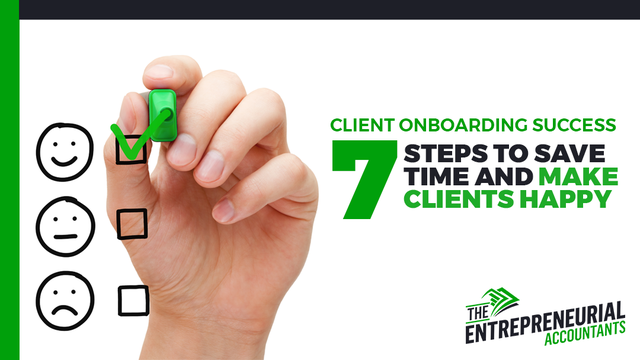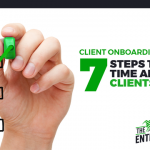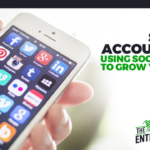There’s nothing quite like having a good conversation with a prospect and landing them as a brand new client. All your efforts in marketing yourself and all of your hustle has paid off. So, now what?
Now you have to onboard that client and be sure you’re set up to successfully service them each month. Done right, the onboarding process can actually benefit your client relationship and save you tons of time down the road. Here’s how.
Why Onboarding Matters
The way you view the onboarding process will help determine your success. Most accountants and tax professionals view it as a necessary evil that must be completed so that the “real” work can begin. But, the truth is, onboarding is more than a necessary nuisance. It’s more like a preseason practice that helps get everyone ready and set the stage for what’s to come.
The onboarding process is so important because it is the first chance to really work with your client. This meeting will set the standard for your working relationship moving forward.
If you impress the client with your organization and your process, they’re more likely to see you in a positive light for the rest of your long engagement. If you fail to maintain a professional and organized demeanor, it may cause the client to call into question your trustworthiness and capabilities.
This is also the time to set expectations and boundaries for how the rest of the engagement will go. If you want to be successful at working with 15-20 clients or more, you need to have a process in place with every client working by that same process. You can’t serve that many clients if each has their own way of doing things each month. It’s simply not possible. Instead, set the standards for how you will approach their case early so that 1) They will know what to expect and 2) You establish your authority as the expert holding the answer to their problems. Reiterate that your approach is tried and true and will work for them, too.
Moving forward, you’ll need your clients to provide you with documents, information, or access to these via online portals. A smooth system for gathering information for onboarding will set the precedent and help your clients know what it will be like to share information and documents on an ongoing basis. It helps you establish your system for sharing information and also reinforces that you have a process that every client follows.
Tools to Make Onboarding Easier
One thing that can make onboarding a nightmare and also make your day-to-day work a pain is having too many applications and tools in use at once.
To make things easier, choose to use only a few tools that really serve you well. These will depend on the niche you serve, but take time to select apps that work with your accounting software and take care of things like bill pay, getting documents/receipts from the client, etc. By using just a few apps across all of your clients, you’ll not only be more familiar with the software yourself, you’ll also have fewer accounts and logins to juggle and be better prepared to train your clients on their side of the applications.
One of the biggest tools you need during onboarding is a portal for uploading and sending documents securely with your client. If you use QuickBooks Online as your accounting software, this just got much easier. Intuit recently rolled out its QBO Document Center, powered by Box. Once you set it up, your client can use the document center to securely upload everything you need for onboarding. It’s searchable by client, so you can find it easily on your end.
Probably even more important than the portal, the other tool you’ll need isn’t even a tech tool at all. It’s a checklist. I love checklists for a lot of the work accountants do on a daily basis. Once you have a process, you can use a checklist to keep you on track, cut down on anxiety, and make your workflow runs smoothly. This is the benefit of following a consistent process. You can grab a copy of my free onboarding checklist, along with a few other key documents here.
7 Steps to Successful Onboarding
While the specifics behind onboarding will depend on your personal process, your clients’ industries, and what services you offer, there are some major steps everyone should be taking to ensure a smooth transition. Here are the seven big steps to success.
1. Engagement
First things first. Now that you’ve come to an agreement with your client, it’s time to lock down the details. Get your engagement letter signed along with an ACH authorization form so you don’t have to go back and forth with payments each month.
You’ll also want to get a disengagement letter sent out to the previous bookkeeper if this is relevant to your situation. Getting everything cleared and transferred from the previous bookkeeper will go more smoothly if it’s done right away.
At this point, you can set up the first ACH payment, whether that is the first month of services or a clean-up/set-up fee, etc. I also like to add my new clients to my mailing list, schedule our first onboarding call, and put their birthday down on my calendar so I can help them feel appreciated when the day comes around.
2. Software
While you’re in the process of transferring over from the previous bookkeeper, this is a good time to get any needed access to software. This may be coming from the client, but they may also need to get access from their previous provider, depending on how they were set up and who had master admin status. This will be easiest if you have that short list of critical software and know exactly what you need to serve your client.
This is the time to set up accounts for your clients in any software they weren’t previously using since all your clients will now be on YOUR system and using your process. It’s also the time to get them entered into your CRM software and make sure that they have a folder in your document management system so you can keep everything organized.
3. Business Entity
Depending on the structure of your new client, you might need to gather documents pertaining to their entity. Entity formation documents, an EIN letter, and information on owners and percentages of ownership are all gathered at this stage, if applicable.
4. Bookkeeping
Now it’s time to collect and review bookkeeping information. Along with reviewing the COA, payables, and receivables, you’ll need to gather info necessary to access day to day bookkeeping resources and complete monthly or yearly tasks. Make sure to get read-only access to bank and credit card accounts so you don’t have to ask the client for statements each month. Get access to Paypal, Square, or any other payment portals for the same reason.
You’ll want a list of the prior year’s 1099s and 1096s along with ID numbers and filing information for any relevant state and local taxes you’ll be responsible for. If the client has a mortgage or other loan that you’ll be working with, make sure to get the details and access to that account if applicable.
5. Payroll
If you’re dealing with payroll for your client, you’ll want to get an employee listing with Social Security Numbers, addresses, salary and wage info, withholding rates, reimbursement and benefit deduction info, sick and vacation pay details, direct deposit details, and employee start dates. Along with all of that, you need I-9s and W-4s on file for every employee, copies of W-2s and W-3s from the prior year along with year-to-date payroll information and any applicable state unemployment info.
6. Tax
At this point, you have almost everything you need. For tax purposes, you’ll want a copy of the prior year tax returns and details on any depreciable fixed assets. You don’t want to get 6 months into an engagement and find out that your client has been handling long-term assets wrong or making less-than-legal tax moves.
7. Client Training
This is a great time to schedule your first client training session. Whether you include ongoing training in your packages or not, you want to make sure your client is properly trained in how to handle their end of your agreement. This is a chance for them to ask questions about the software and the process. Remember, they’re following your process now, so they may be getting familiar with a new application or new steps in getting their information to you.
The Key to Smooth Onboarding
The content of these steps will look a bit different for each accountant, depending on what you offer and how you work with your clients. The key is to get the information when you need it and to request it in small chunks.
If you dump this list on your clients they’ll be completely overwhelmed. Decide which info you need first in order to move to the next step and celebrate each little win as your clients complete the steps. This helps build a good foundation for the relationship, give you a smooth transition, and prevents your clients from being overwhelmed by the process.












